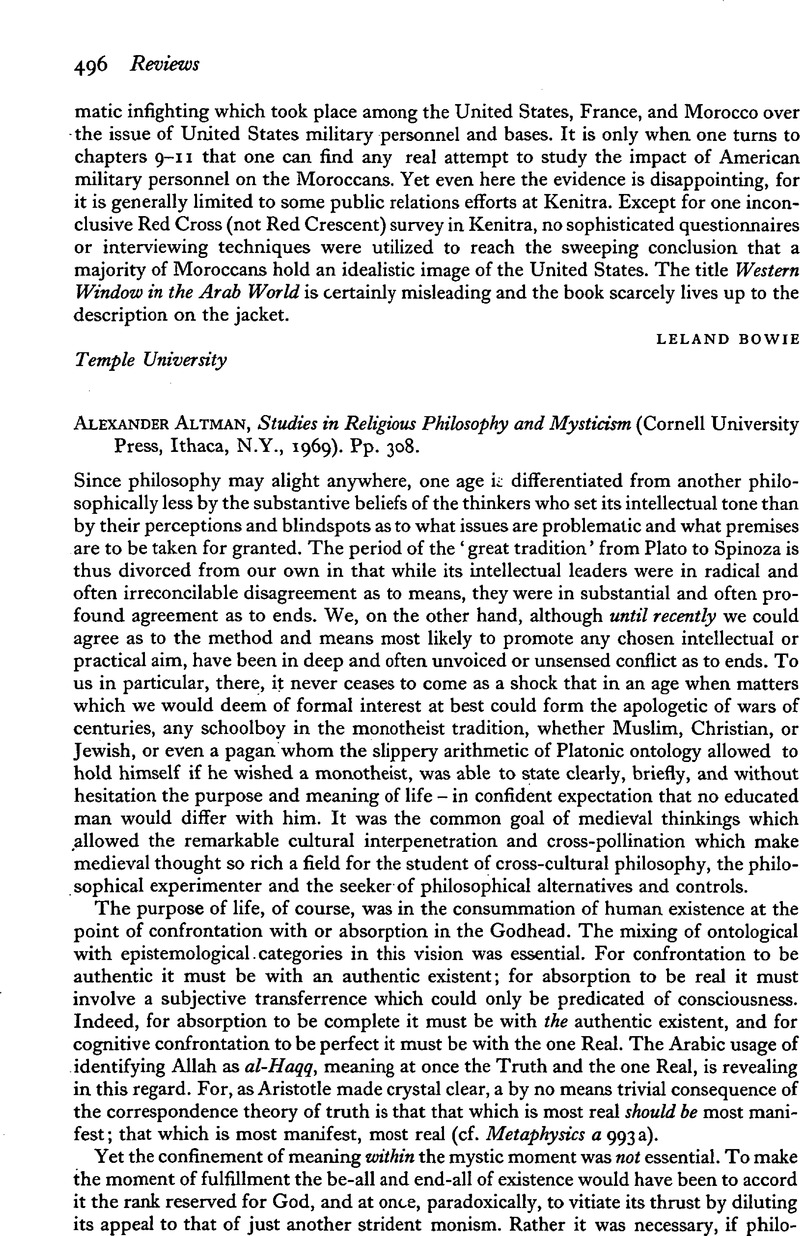No CrossRef data available.
Article contents
Alexander Altman, Studies in Religious Philosophy and Mysticism (Cornell University Press, Ithaca, N.Y., 1969). Pp. 308.
Published online by Cambridge University Press: 29 January 2009
Abstract

- Type
- Book Reviews
- Information
- Copyright
- Copyright © Cambridge University Press 1973
References
page 497 note 1 Alexander Altmann's essays on ‘The Delphic Maxim in Medieval Islam and Judaism’, ‘The Ladder of Ascension’, and ‘Ibn Bajjah on Man's Ultimate Felicity’, along with much else in his recently published collection Studies in Religious Philosophy and Mysticism will provide welcome provender in the undertaking of such an attempt. Altmann is analytical, critical without being fussy, yet keenly sensitive to philosophical homologies. He skillfully disentangles the skeins of complex and consanguineous intellectual relationships, slighting neither kinship nor difference. These are the skills required of any who would learn the arts of translation and transformation required of those desirous to pass (without the superficialities of mere culture-hunger or culture-shock) beyond the confines of the womb of parochialism.Google Scholar
page 498 note 1 It must have required enormous reserves of intellectual self-discipline in the pagan Platonists to affirm this while denying the Christian corollary, that God, somehow, was human. For the taxonomy of man and God, cf. my forthcoming translation of Ibn Tufayl's Hsayy Ibn Yaqzân.Google Scholar
page 498 note 2 The final map of the that philosophical region fortunately has not yet been drawn. But the life's work of Harry Austryn Wolfson is the chart of many of its principal landmarks: Philo, the Church Fathers and Origen, Augustine, the mutakallimûn, Avicenna, Ghazāli, Crescas and Maimonides, Aquinas, and Spinoza.Google Scholar
page 500 note 1 The imagery of electricity runs with a current of its own through medieval talk of mystic awakening — cf. Ibn Sînâ, Ibn Tufayl, Maimonides, et al.Google Scholar




